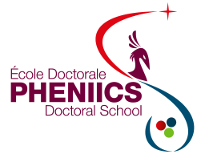Orateur
M.
Sviatoslav Bilokin
(Laboratoire de l'Accélérateur Linéaire)
Description
A simple track-finding algorithm was developed to study tracks left by secondary particles, emerging from hadronic interactions in a highly granular electromagnetic calorimeter prototype. The predictions of two Monte Carlo Geant4 models are compared with experimental data, taken at FNAL in 2008, using a novel track-finding algorithm. Present Monte Carlo simulations provide a good`enter code here` description of the experimental data in terms of new observables, available through the detailed analysis of the secondary particles; the Monte Carlo predictions are within 20% of the data, and for many observables much closer. Main systematic effects were studied using electron and muon samples.
The top quark production study is concentrated on improving of top quark polar angle reconstruction in ILD simulation. A charge information of the top quark is extracted from a corresponding b-jet by using two techniques: secondary vertex charge calculation and usage of kaon charge from ternary vertex; The secondary vertex charge technique is enhanced by a new vertex charge recovery method. The kaon identification can be done by using a dE/dx particle classification in TPC of ILD. Combination of these two methods gives ~95% of top quark charge reconstruction purity.
Auteur principal
M.
Sviatoslav Bilokin
(Laboratoire de l'Accélérateur Linéaire)



